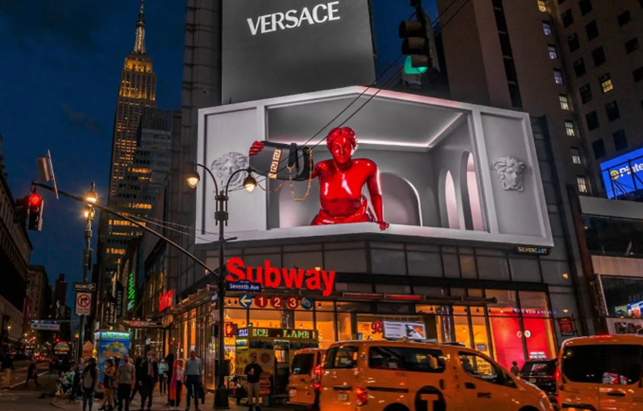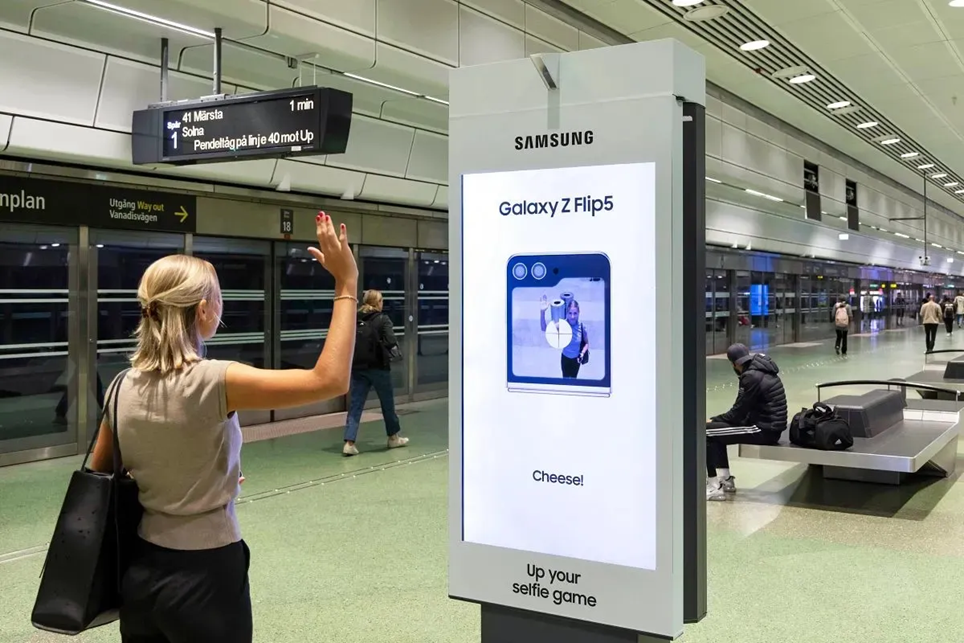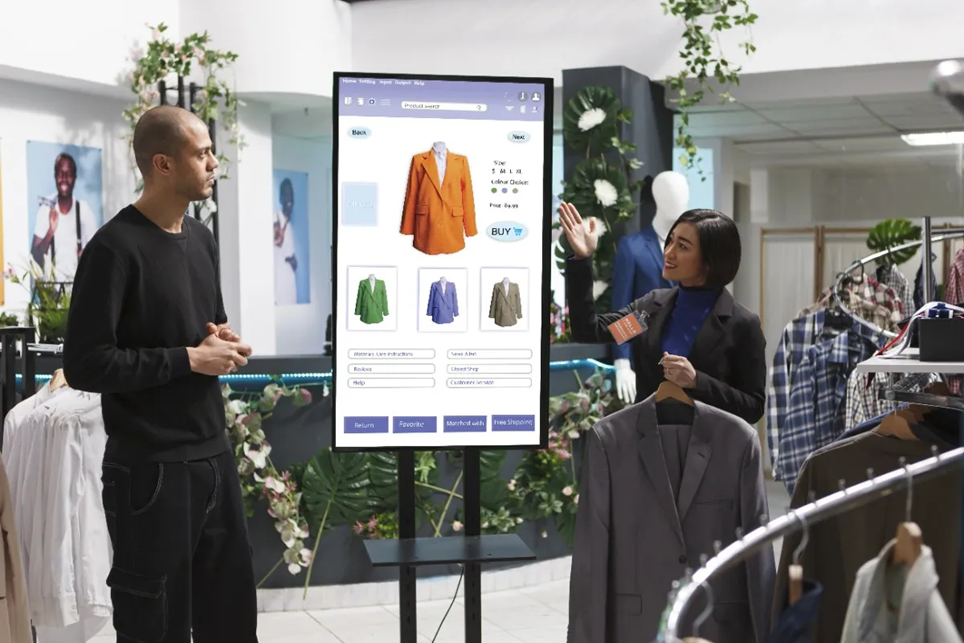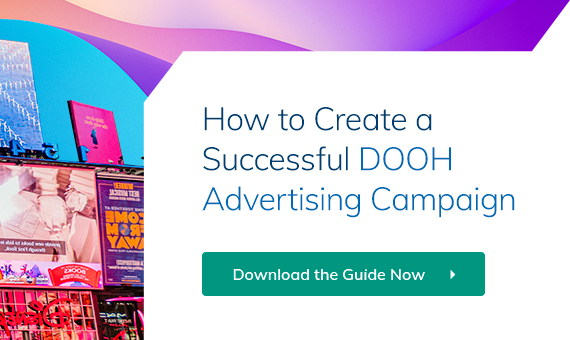Digital out-of-home or DOOH advertising consists of physical installations in public spaces which convey product or service promotions and brand messaging to potential consumers outside their homes as they move through their daily routines.
DOOH advertising displays are powered by digital technology and can display content that changes based on the time of day, weather conditions, current events, or audience demographics.
DOOH advertising offers marketers and agencies a step up from traditional static billboards and posters, as it allows for precise targeting and real-time updates. This, and the fact that DOOH advertising can readily integrate with digital marketing channels, makes it a powerful tool for modern omnichannel marketing strategies.
Little surprise then, that recent research indicates that 94% of media professionals plan to increase their investment in DOOH advertising, with 20% planning to double their spending.
How DOOH Advertising Helps Agencies Looking to Enhance Audience Engagement
For brands looking to introduce themselves to a wide audience or create greater awareness of their identity and mission, large format DOOH ads such as highway billboards, transit station screens, and spectacular displays in major urban spaces ensure maximum visibility.
Importantly, this occurs in a physical form that viewers can’t readily miss or deliberately swipe past or block (as they can with digital ads on their personal devices).

[Image source: Geomotive.io]
With dynamic content management systems and the use of programmatic DOOH or pDOOH platforms, marketers can adjust DOOH advertising creatives in response to prevailing conditions, and optimize their placements to ensure ads appear at relevant times when they’re most effective.
With place-based or location-based DOOH advertising formats, agency marketers can target consumers in specific environments where they are more likely to engage with a brand.
For example, placing DOOH ads or digital signage near office buildings, or on educational campuses can capture professionals, students, or faculty during the course of their working day. Similarly, by placing ads in bars, restaurants, or movie theatre’s, marketers can engage audiences with context-relevant material in social and entertainment settings.
To enhance engagement even further, DOOH advertising installations may incorporate interactive elements such as social media hashtags, touchscreens, or QR codes that viewers can scan to gain instant access to other touch points of the brand.

[Image source: Play-Media.org]
With most critical buying decisions taking place in-store, agencies can increase customer engagement for their clients by using Point-of-Purchase (PoP) or Point-of-Sale (PoS) DOOH advertising formats.
For instance, digital display screens in grocery stores near checkout lanes can encourage impulse buys or last-minute purchases. In a similar manner, PoS screens displayed at gas stations and parking lots can reach consumers in receptive moments as they wait or refuel.

[Image source: Play-Media.org]
By integrating real-time data and programmatic buying, brands can customize their DOOH advertising to display promotions based on the weather, time of day, or foot traffic patterns. This approach helps make ads more relevant. The ability to rapidly switch between creatives also keeps DOOH advertising displays fresh and engaging.
Integrating DOOH Advertising with Other Marketing Channels
One of the great advantages of DOOH advertising is its ability to bridge the online and physical worlds. Having a presence on the street and on the web gives brands the opportunity to create a memorable and consistent identity that can meet and engage with consumers at multiple touch points.
Brands can actively promote their DOOH campaigns on social media, extending their reach and engaging a wider audience with relevant content. This also helps brands to connect with audiences on a digital platform where they may spend a significant amount of time.
Within the DOOH advertising itself, incorporating specific hashtags in a display enables brands to invite interaction from viewers. For example, a brand might ask viewers to use a certain hashtag when describing their experiences with a product or service, or to tag a selfie they take while viewing a DOOH ad.
Leveraging anonymized location data from mobile devices enables marketers and agencies to serve more relevant ads on the street. Mobile location data also provides advertisers with opportunities to retarget DOOH advertising audiences with consistent brand messaging on their personal devices.
Mobile device integration also gives DOOH advertisers the chance to increase audience engagement through interactive elements such as QR codes.
For example, a brand might give viewers an option to scan a QR code from a DOOH screen in order to access special offers or more information.
Email integration with DOOH advertising provides marketers with an opportunity to engage with consumers at two levels. Direct email marketing offers brands a chance to communicate directly with customers at an individual scale. At the same time, DOOH advertising empowers brands to amplify their messaging on a larger stage. As an example, a brand might reinforce a promotion that it highlights in an email with visually striking imagery or animation in a complementary DOOH ad.
Optimizing Ad Placements and Campaigns
The precise audience and location targeting of DOOH ad technology and programmatic DOOH platforms does not only empower brands to deliver dynamic and engaging content that’s specifically relevant to the viewer. They also provide information and insights that enable marketers to choose the best locations for their DOOH ads – and to properly assess how their DOOH campaigns are performing.
From impression counts and audience demographics to engagement metrics and conversion rates, advertisers can track the effectiveness of their campaigns in real-time. With data-driven insights, brands can also make informed decisions that maximize their return on investment (ROI) and drive tangible business results.
Embrace DOOH Advertising Today with The Neuron
Using a dedicated programmatic DOOH platform, advertisers can set specific conditions (i.e., how, when, where, and to whom they want their ads to appear) for how they want to buy media. Ad space is bought – and ads are delivered automatically – once those conditions are met.
With the right pDOOH platform and just a few clicks, marketers can plan their campaigns based on budget allocation or location-based targeting criteria across multiple screens.
Specializing exclusively in pDOOH, The Neuron offers a unique bidding technology that utilizes a smarter, more dynamic algorithm to deliver higher-impact ad placements at lower costs for clients. Advertisers can automatically activate campaigns based on user actions, time, weather, inventory changes, or trends for timely, relevant ads.
To learn more about how The Neuron can help your agency get the most out of DOOH advertising, book in your demo.

